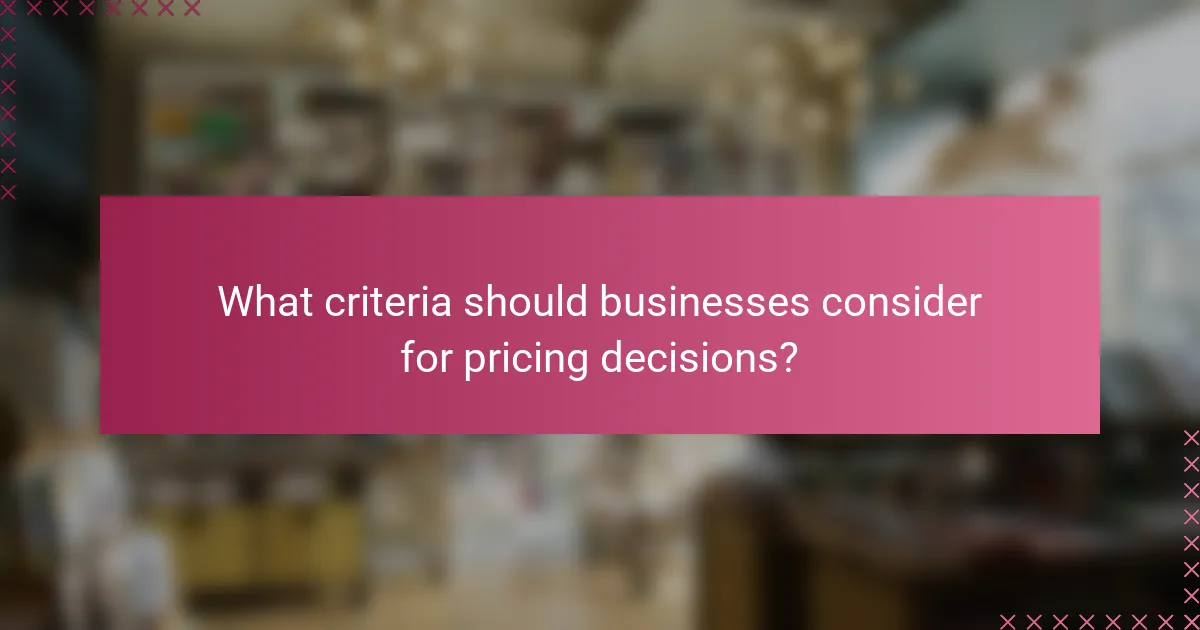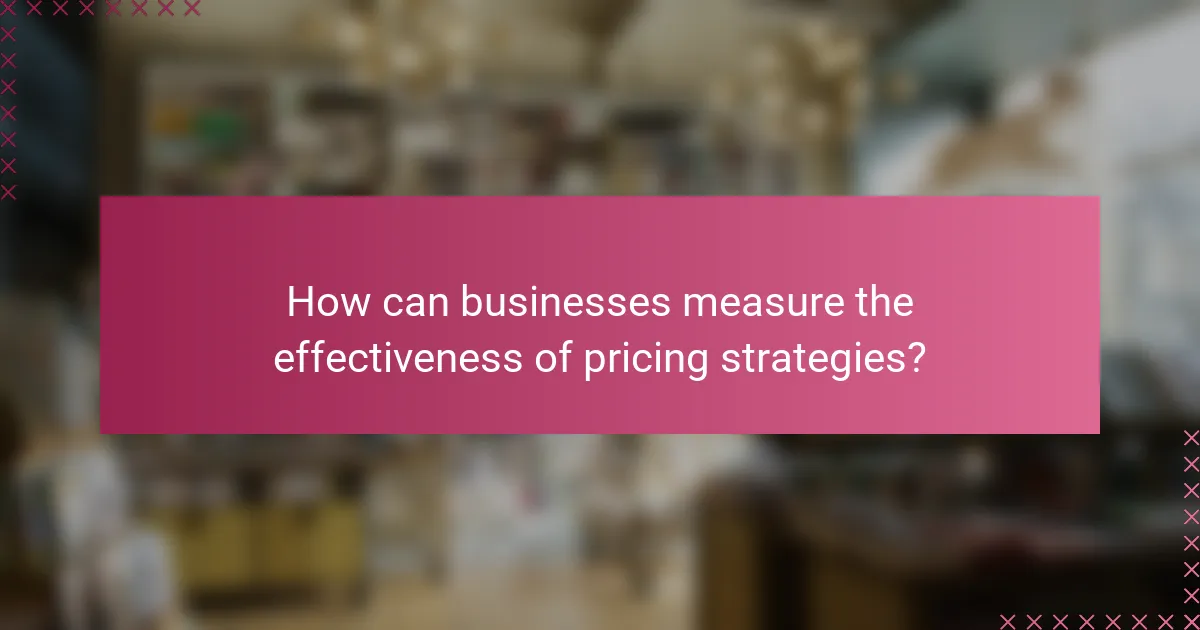Pricing psychology plays a crucial role in shaping consumer behavior, as it affects how individuals perceive value and make purchasing decisions. By understanding and leveraging various pricing strategies, such as charm pricing and scarcity tactics, businesses can enhance perceived value and drive sales. Additionally, staying attuned to market trends is essential for companies to adjust their pricing strategies effectively and maintain competitiveness in a dynamic marketplace.

How does pricing psychology affect consumer behavior?
Pricing psychology significantly influences consumer behavior by shaping perceptions of value and guiding purchasing decisions. Consumers often rely on pricing cues to determine whether a product meets their expectations and whether it is worth the investment.
Influence of perceived value
Perceived value refers to the worth that a consumer assigns to a product based on their expectations and experiences. Factors such as brand reputation, product quality, and price comparisons play crucial roles in shaping this perception. For instance, a higher price can sometimes enhance perceived value, suggesting superior quality or exclusivity.
To leverage perceived value, businesses can employ strategies like premium pricing or bundling products. By presenting a product as part of a high-value package, companies can enhance consumer perception and justify higher prices.
Impact on purchasing decisions
Pricing psychology directly impacts purchasing decisions by influencing how consumers evaluate options. When faced with multiple choices, consumers often gravitate towards products that appear to offer the best value for money. This can lead to a preference for mid-range pricing, which is often perceived as a balance between quality and affordability.
Additionally, pricing tactics such as charm pricing (e.g., pricing items at $9.99 instead of $10) can create a perception of a better deal, encouraging impulse purchases. Understanding these psychological triggers can help businesses optimize their pricing strategies to drive sales.
Examples from major retailers
Major retailers effectively utilize pricing psychology to enhance consumer engagement. For example, luxury brands often set high price points to create an image of exclusivity, while discount retailers like Walmart use everyday low pricing to attract budget-conscious shoppers.
Another example is Amazon, which frequently employs dynamic pricing strategies, adjusting prices based on demand and competition. This approach not only maximizes sales but also keeps consumers returning for perceived deals. Retailers can learn from these strategies to tailor their pricing models to their target markets.

What strategies enhance perceived value in e-commerce?
Enhancing perceived value in e-commerce involves employing strategies that make products seem more valuable to consumers. By effectively using techniques like bundling, charm pricing, and scarcity tactics, businesses can influence buyer behavior and increase sales.
Bundling products
Bundling products involves grouping several items together and selling them at a single price, which can create a perception of added value. This strategy can encourage customers to purchase more than they initially intended, as the bundled price often appears more attractive than buying items separately.
For example, a software company might offer a suite of applications at a discounted rate compared to purchasing each one individually. Consider offering bundles that complement each other, such as a camera with a lens and a carrying case, to enhance the perceived value further.
Using charm pricing
Charm pricing refers to setting prices just below a round number, such as $19.99 instead of $20. This pricing strategy can make products seem cheaper and more appealing, as consumers often perceive prices ending in .99 as significantly lower than they are.
Research suggests that charm pricing can increase sales by a noticeable margin, particularly in e-commerce settings. When implementing this strategy, ensure that the price still reflects the product’s quality and value to maintain credibility.
Implementing scarcity tactics
Scarcity tactics create a sense of urgency by suggesting that a product is in limited supply or available for a limited time. This can motivate consumers to make quicker purchasing decisions due to the fear of missing out.
For instance, displaying messages like “Only 3 left in stock!” or “Sale ends in 24 hours!” can effectively prompt immediate action. However, it’s essential to use this tactic honestly; misleading customers about availability can damage trust and brand reputation.

How do market trends shape pricing strategies?
Market trends significantly influence pricing strategies by dictating consumer behavior and perceived value. Businesses must adapt their pricing to align with these trends to remain competitive and maximize profitability.
Current trends in consumer spending
Consumer spending trends are shifting towards experiences and sustainability, affecting how brands price their products. For instance, many consumers are willing to pay a premium for eco-friendly products, which can justify higher pricing strategies.
Additionally, the rise of e-commerce has led to increased price sensitivity, as shoppers can easily compare prices online. Brands must consider these dynamics when setting prices to attract and retain customers.
Impact of inflation on pricing
Inflation can compel businesses to raise prices to maintain profit margins, impacting consumer purchasing decisions. When inflation rates are high, consumers may prioritize essential goods over luxury items, prompting brands to adjust their pricing strategies accordingly.
Companies often implement gradual price increases or offer promotions to mitigate the negative effects of inflation on consumer demand. Understanding the inflationary environment is crucial for effective pricing strategies.
Case studies from leading brands
Leading brands like Apple and Starbucks illustrate how market trends shape pricing strategies. Apple frequently adjusts its pricing based on consumer demand for innovative technology, often introducing premium pricing for new products.
Starbucks, on the other hand, has successfully implemented tiered pricing strategies, offering a range of products at different price points to cater to varying consumer preferences. These case studies highlight the importance of aligning pricing with market trends to enhance perceived value and drive sales.

What criteria should businesses consider for pricing decisions?
Businesses should consider several key criteria for pricing decisions, including understanding their target audience, analyzing competitor pricing, and evaluating their cost structures. These factors help determine an optimal price point that aligns with customer expectations and market dynamics.
Understanding target audience
To effectively set prices, businesses must first understand their target audience’s preferences, behaviors, and willingness to pay. Conducting market research, surveys, and focus groups can provide insights into what customers value most and how much they are willing to spend.
For example, luxury brands often target affluent consumers who expect high-quality products and are less sensitive to price changes. In contrast, budget-friendly brands cater to cost-conscious shoppers who prioritize affordability. Tailoring pricing strategies to these segments can enhance perceived value and drive sales.
Analyzing competitor pricing
Competitor pricing analysis is crucial for positioning a business within the market. By examining how similar products are priced, companies can identify pricing trends and gaps that may present opportunities or threats. This analysis should consider both direct competitors and indirect alternatives.
For instance, if competitors are offering similar products at lower prices, a business may need to justify a higher price through superior quality or unique features. Alternatively, if competitors are priced significantly higher, it may indicate a potential for premium positioning. Regularly monitoring competitor pricing helps businesses stay competitive and responsive to market changes.
Evaluating cost structures
Understanding the internal cost structure is essential for setting profitable prices. Businesses should analyze fixed and variable costs associated with production, distribution, and marketing. This evaluation ensures that prices cover costs while allowing for desired profit margins.
A common approach is to use a cost-plus pricing strategy, where a markup is added to the total cost to determine the selling price. However, businesses must balance this with market conditions to avoid pricing themselves out of the market. Regularly reviewing cost structures can help identify areas for efficiency improvements and cost reductions, ultimately supporting better pricing decisions.

How can businesses measure the effectiveness of pricing strategies?
Businesses can measure the effectiveness of pricing strategies by analyzing sales performance metrics and gathering customer feedback. These approaches provide insights into how pricing influences consumer behavior and overall profitability.
Sales performance metrics
Sales performance metrics are essential for evaluating pricing strategies. Key indicators include total revenue, profit margins, and sales volume. Tracking these metrics over time can reveal trends that indicate whether a pricing change has positively or negatively impacted sales.
For instance, if a business raises prices and observes a significant drop in sales volume but maintains revenue, it may need to reassess its pricing strategy. A common heuristic is to monitor sales data for at least a few months post-adjustment to gauge the long-term effects.
Customer feedback analysis
Customer feedback analysis helps businesses understand how pricing affects perceived value. Surveys, reviews, and direct customer interactions can provide valuable insights into whether customers feel the price aligns with the product’s quality and benefits.
For effective feedback collection, consider using structured surveys that ask customers to rate their satisfaction with pricing on a scale. This data can highlight areas for improvement and inform future pricing decisions. Additionally, be cautious of relying solely on feedback from a small sample, as it may not represent the broader customer base.
